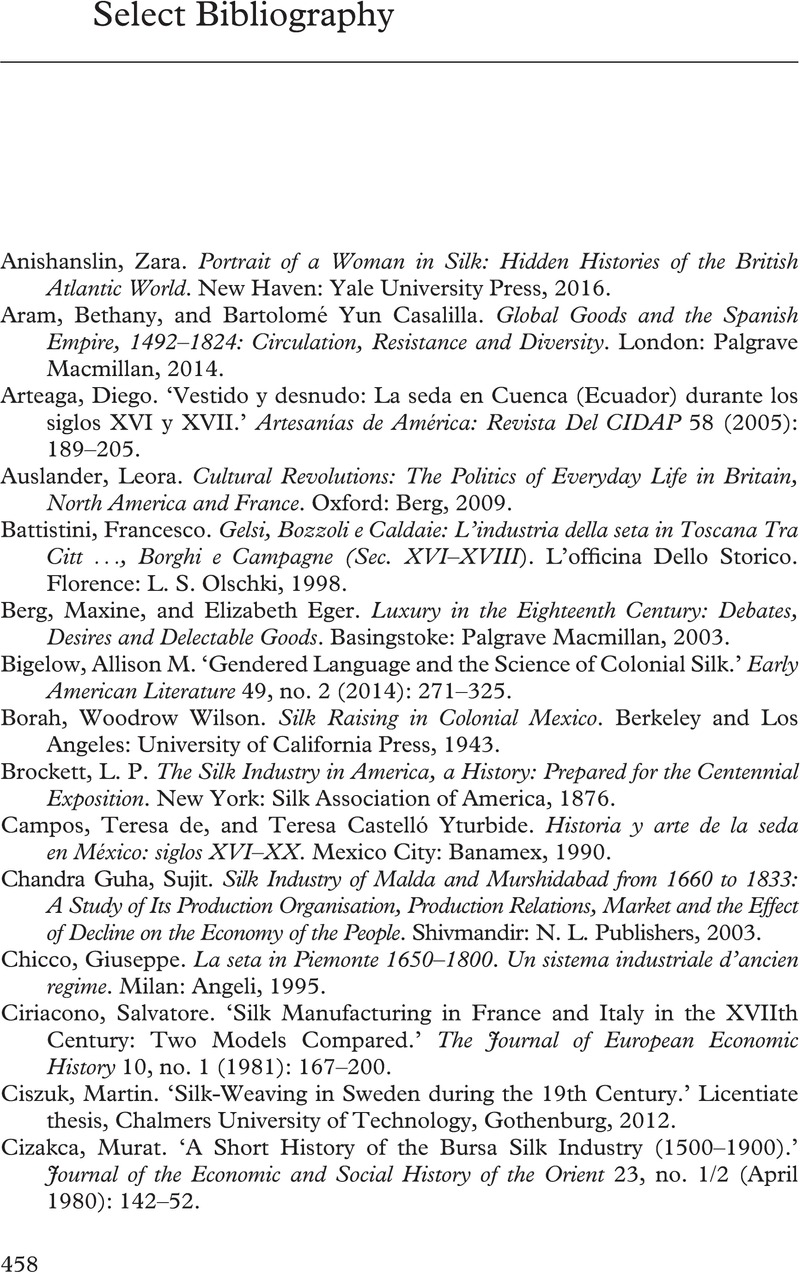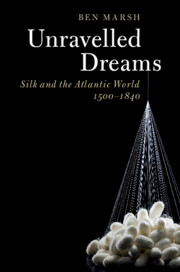Select Bibliography
Published online by Cambridge University Press: 08 October 2020
Summary

- Type
- Chapter
- Information
- Unravelled DreamsSilk and the Atlantic World, 1500–1840, pp. 458 - 462Publisher: Cambridge University PressPrint publication year: 2020



